|
Welcome To Your September 2013
Off Camera Newsletter
| |
|
|
|
|
Off Camera
Kevin Wing, Editor
|
the board of governors
officers:
Keith Sanders, San Jos� State University, President
Kevin Wing, ABC-TV/"Good Morning America," VP San Francisco
Christian Anguiano, KUVS 19, VP Sacramento
Richard Harmelink, KFSN ABC 30, VP Fresno
Justin Fujioka, KITV 4, VP Hawaii
Terri Russell, KOLO 8, VP Reno
Mike Garza, KXTV 10, VP Smaller Markets
Kym McNicholas, PandoDaily, Secretary (Memership)
Terry Lowry, LaCosse Productions, Treasurer
Javier Valencia, Consultant, Past President
national trustees:
Linda Giannecchini, KQED
(National Awards Co-Chair)
(Museum)
Alison Gibson, Media Cool
(National 2nd Vice Chairperson)
Cynthia Zeiden, Zeiden Media
(National Program Chair)
(Activities)
Steve Shlisky, KTVU 2 (Alternate) (Education)
governors:
Zara Arboleda, KGPE CBS 47
Kent Beichley, Freelance
Luis Godinez, KDTV Univision 14
Pablo Icub, KUVS Univision 19
Mistie Lackey, KOVR CBS 13
George Lang, The Big Picture
Ron Louie, KTVU Channel 2
Da Lin, KPIX 5
Jen Mistrot, KPIX 5
Karen Owoc, The Health Reporter
Jim Parker, CBS Digital Media
Jack Pavelick, Springboard TV
Greg Rando, KTVU Channel 2
Bob Redell, KNTV NBC Bay Area
Gary Schultz, KGO ABC 7
Sandy Sirias, KFTV Univision 21
Matt Skryja, AAA
Kim Stephens, KMPH Fox 26
Stephanie Stone, KFSN ABC 30
Karen Sutton, Stanford Video
Ken Wayne, KTVU Channel 2
David Waxman, KRCB 22
Justin Willis, KSEE 24
Pamela Young, KITV 4
Alice Yu, KVIE 6
committee chairs:
John Catchings, Catchings & Associates (Museum)
Craig Franklin, (Awards)
Mark Pearson, ARC Law Group (Legal/Bylaws)
James Spalding, Spalding & Co. (Finance)
Patty Zubov, Platonic TV
(Marketing)
execUtive director:
Darryl R. Compton, NATAS
|
|
|
|
GOLD & SILVER CIRCLE 2013
Inductees' Presenters
Chosen For Ceremonies
Rita Williams To Emcee Oct. 19 Event |
Rita Williams, the renowned Emmy Award-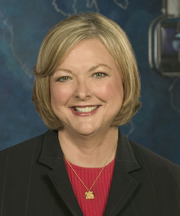 | |
Rita Williams |
winning reporter for KTVU Channel 2 in Oakland for 35 years until her retirement last February, will serve as mistress of ceremonies at the 2013 Gold & Silver Circle induction luncheon at the Parc 55 Hotel in San Francisco on October 19.
Williams is also a Silver Circle inductee, having become a member in 2001.
Veteran Bay Area television journalist Belva Davis, who retired this year after 50 years in Bay Area broadcasting, will be inducted into the Gold Circle for her half-century of accomplishments and 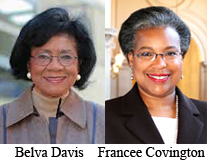 contributions to the Bay Area television community. contributions to the Bay Area television community.
At the induction luncheon, she will be introduced by Francee Covington, who retired in 2008 after a rewarding career in television and video production as a director, producer and writer, working at WCBS-TV New York, WBZ-TV Boston, KPIX-TV and KQED-TV in San Francisco. Covington headed her self-named video production company for more than twenty years, serving Fortune 500 companies and branches of state and municipal governments.
Being inducted into this year's Silver Circle are Spencer Christian, meteorologist, KGO-TV; Don Ford, multi-media journalist, KPIX; Roberta Gonzales, weekend weather anchor, KPIX; Lori Silva, news director, KHON; Jim Swanson, director of local programming, KRON; and Kevin Wing, producer/reporter, KTVU/KGO-TV/KNTV/ABC News.
Dan Ashley will be introducing Christian. Ashley is anchor of KGO-TV's ABC7 News at 6 and 11 p.m. and ABC7 News at 9 p.m. on Your TV20, weeknights. Ashley came to ABC7 in 1995 as the weekday 5 p.m. news anchor and investigative reporter. He began his television career at WTVD, the ABC 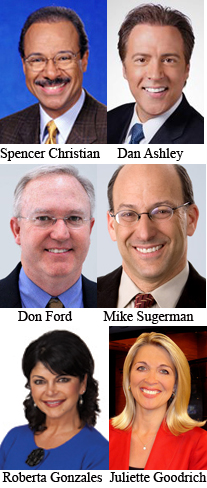 owned television station in Durham, North Carolina. He then worked for WCBD-TV, the ABC affiliate in Charleston, where he was weekend anchor and later the 6 and 11 p.m. anchor. owned television station in Durham, North Carolina. He then worked for WCBD-TV, the ABC affiliate in Charleston, where he was weekend anchor and later the 6 and 11 p.m. anchor. KPIX 5's Mike Sugerman is introducing Ford. Sugerman is one of the best storytellers in the United States, and has the hardware to prove it. His eight individual national Edward R. Murrow Awards rival any local news reporter in the country. He's among the most honored broadcast journalists in Califonria with a total of 14 Emmys, including 6 Best Writing awards, and more than 100 other national, state, regional, and local awards. Sugerman brings his unique perspective to KPIX 5 after two decades at KCBS radio, where he still reports on a weekly basis. Juliette Goodrich will be introducing Gonzales. Goodrich is an Emmy Award-winning reporter and Bay Area native. Juliette Goodrich joined CBS 5 in 1997 and has performed a variety of anchoring and reporting assignments during her time with the station. Goodrich graduated from UC Davis with a degree in communications and was awarded the Kelly Broadcasting Scholarship her senior year. She started her broadcasting career reporting for Channel 30 in her hometown of Pleasanton during
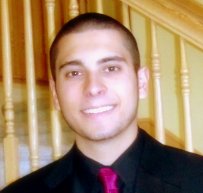 | |
Randall Hahn |
the early 1990s and gained additional local and national experience reporting and anchoring for news stations in Redding, Chico and Sacramento.
Randall Hahn, Gonzales' 21-year-old son, will also make an appearance. Hahn will present his mother with her certificate and pin, and will also say a few words about her. Kristina Lockwood is the president and general manager of KHON 2, the Fox affiliate and The CW affiliate in Honolulu. She will be introducing Silva. Before being named general manager of KHON2 in February, Lockwood served as director of sales for Cox Media in Southern California. Prior to her role at Cox, she worked in Hawaii as general sales manager for KGMB, the CBS affiliate. She also held leadership roles at KHON and KITV. Vicki Liviakis, who will be introducing 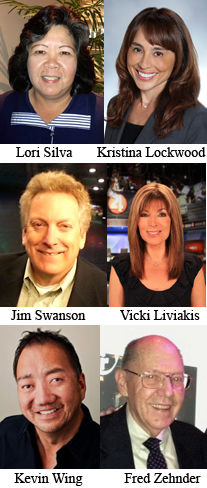 Swanson, joined KRON in 2001 and most recently worked as an anchor and general assignment reporter. Swanson, joined KRON in 2001 and most recently worked as an anchor and general assignment reporter. Liviakis began her broadcast career in radio as an anchor and news director at KFRC Radio in San Francisco. From KFRC, she went on to anchor at Metro Traffic Control, K-101 Radio, and KGO Radio in San Francisco. She began working in television in 1986 as a freelance anchor, host, and reporter, working on such projects as PBS' Nightly Business Report, the noon news at KTVU-TV in Oakland, and KGO-TV's AM San Francisco. Fred Zehnder, the longtime news director at KTVU and now retired from television, will be introducing Wing. Zehnder was born and raised in Lakeport and worked during high school summer vacations at the Lake County Bee newspaper. He graduated from Humboldt State University with a degree in broadcast journalism in 1956, served in the U.S. Army as broadcast news specialist at the public information office at Ft. Bliss Texas, and worked in TV news at KVIQ-TV in Eureka, KOVR-TV in Sacramento, KNXT in Los Angeles, KPIX and KGO-TV in San Francisco. From 1978 to 1999, he was news director of KTVU in Oakland. Since then, Zehnder has been working full-time as publisher of his two weekly newspapers, the San Leandro Times and the Castro Valley Forum. |
|
|
|
| |
The National Academy of
Television Arts and Sciences
San Francisco/Northern California Chapter
GOLD & SILVER CIRCLE
CLASS OF 2013
INDUCTION LUNCHEON
Saturday, October 19, 2013
PARC 55 San Francisco Wyndham Hotel - Union Square San Francisco
55 Cyril Magnin Street, Market at Fifth Streets, San Francisco, CA 94102
No Host Reception 11 a.m. ~ Luncheon 12 p.m. ~ Induction Ceremony 1 p.m.
Link to purchase Tickets & Sponsorships
DON'T MISS IT!
PURCHASE YOUR TICKETS BEFORE FRIDAY, OCTOBER 4th, AND SAVE!
|
|
LUNCHEON MENU Freshly Baked Artisan Rolls and Sweet Butter. Salad The Parc 55 Salad Butter Lettuce, Point Reyes Bleu Cheese, Dried Cherries, Sliced Granny Smith Apples, Candied Walnuts, Champagne Vinaigrette Entr�e Horseradish Crusted Baked Salmon, Tarragon Buerre Blanc Chef's Selection of Seasonal Accompaniments Entr�e Option Vegetarian, Vegan, Gluten-Free available upon request Grilled Mediterranean Vegetable Tower Served with Polenta Cake & Tomato Coul�s Dessert Chocolate Indulgence Cake with Raspberry Coulis Wine Compliments of Watts Winery 2010 Watts Cabernet Sauvignon (Los Robles Vineyard, Clements Hills) 2011 Watts Chardonnay (Casa Azul Vineyard, Dijon California) Freshly Brewed Coffee, Decaffeinated Coffee and Tea. Please submit full names and menu choices for each person attending. |
|
Remember That Special Evening In June When You Won Your First Emmy Award? Or Your 10th? And How Exciting It Was To Walk The Red Carpet?
You Still Have Time To Order Official 2013 Emmy Awards Gala Photos!
 Award Photos By Richard Lau Backstage Photos By Ken Newberry Award Photos By Richard Lau Backstage Photos By Ken Newberry
|
KOLO's Russell, Thomas Inducted Into
Nevada Broadcasters Hall of Fame
Station's Senior Reporter, Digital Content Manager Honored For Service |
Terri Russell and Pat Thomas of KOLO 8 in Reno were honored Aug. 17 in Las Vegas at the 18th Annual Nevada Broadcasters Association Hall of Fame. The NBA honors those who have tenure in the broadcasting industry, from sales, management, promotions, engineering, photography, journalism, and public relations. This month, KOLO 8 celebrates its 60th year on the air. As the second oldest television station in Nevada, the now-ABC affiliate was recognized for service to the community, through its news coverage, charitable service, and public service programs.
Thomas, KOLO's digital content manager, was recognized for his three decades of work in both northern Nevada radio and television. Thomas has called himself "cocky" more than once, and it has served him well as he's worked his way from an overnight deejay at a Reno AM station to station program manager. Later, he became a radio talk show host, a writer and producer for a brand-new CW affiliate newscast in Reno, and finally, joining KOLO -- first, as a producer and assignment manager, and now, as manager of all digital content generated by KOLO'S news department.
Russell, Reno vice president on the Board of Governors of the San Francisco/Northern California Chapter of the National Academy of Television Arts and Sciences, was inducted into the Hall of Fame with Thomas and KOLO 8. A Nevada native, Russell began her career at KTVN in Reno as an associate director and progressed to a producer, general assignment reporter and, finally, a medical reporter with her own Monday-through-Friday segment, accomplishing it within seven years. She moved to Las Vegas after taking a medical reporter position at the NBC affiliate there. After working simultaneously as a news writer in Portland, Oregon, and an anchor-reporter at an independent station in Vancouver, Washington, Russell decided to move back home to get some sun. She has been nominated 12 times for regional Emmy awards. She has received an Emmy for her series of reports on organ donation. Russell has also received an Edward R. Murrow Award for her work in investigative reporting. She has also won numerous Associated Press and Northern California RTNDA awards as well. Currently, Russell is the senior reporter at KOLO 8. She has been there since 1997.
|
|
Meet the Masters of Digital Media and OTT-
Right in Your Own Backyard
|
LOADS OF VALUE IN ONE EVENT!
Keynotes, Panels, Meals, Digital Leadership Awards,
Lionsgate Party and More
Next TV Summit
Tuesday, September 10-Wednesday, September 11
San Francisco
Next TV Summit, September 10-11, in San Francisco. (LINK TO http://www.nexttvsummit.com/)
is a two-day, high-level b-to-b event bringing together leaders in broadcasting, content, advertising, digital media and technology. Sessions will include all of the latest in content platforms and distribution of video, as well as the monetization and future of television.
What's more, this year the following three executives will receive Digital Leadership Awards for their contributions in content, entertainment and technology:
-
Albert Cheng, EVP and Chief Product Officer, Digital Media, Disney/ABC Television Group
-
James Packer, President of Worldwide Television and Digital Distribution, Lionsgate
-
Blair Westlake, Corporate VP, Media & Entertainment Group, Microsoft
In addition, Next TV Summit attendees are invited to a special cocktail party and screening of "Orange is the New Black" hosted by Lionsgate to celebrate the Digital Leadership Awards and the show's renewal by Netflix for a second season.
Don't delay and register today-space is limited. (LINK TO http://www.nexttvsummit.com/registration/
|
Board Of Governors' Muir Woods Retreat
Introduces New Board, Plans for 2013-2014 |
By Keith Sanders President, San Francisco/Northern California Chapter
Muir Woods was the perfect place for the board to contemplate the future of our Chapter. Over 20 governors, officers and trustees drove to Mill Valley to attend a retreat in an isolated clubhouse looking down on that regal grove of redwoods.
Newly-elected governors got the chance to meet veteran board members. Committee chairs recruited new members. Marketing Chairperson Patty Zubov began a brainstorming session about marketing and event promotions that yielded many new ideas. San Francisco vice-president and Off Camera editor Kevin Wing spoke about new features in the monthly newsletter. Then, Governor Jim Parker gave everyone the first sneak preview of an innovative WordPress website that's under construction.
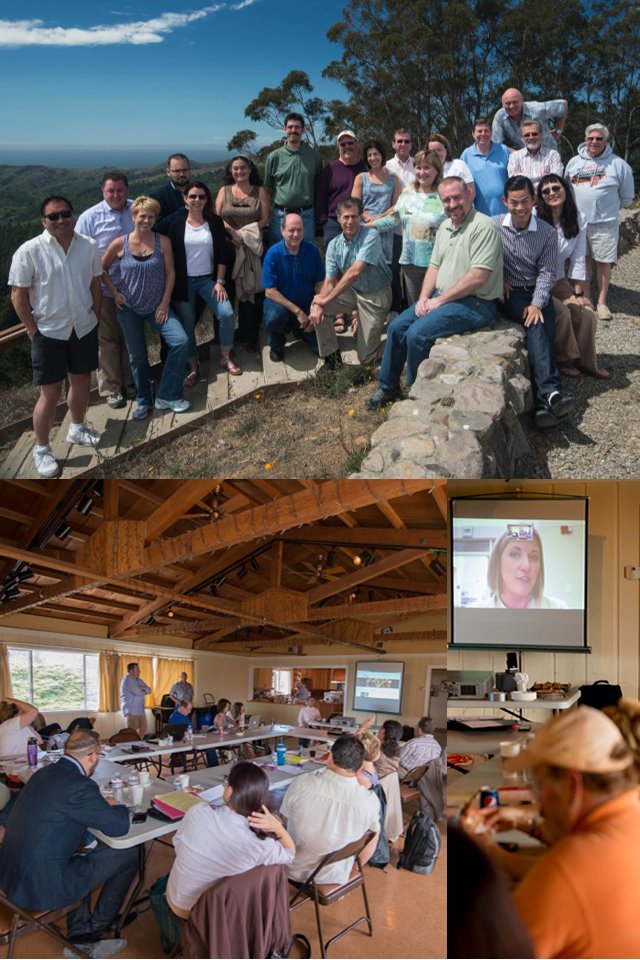 Muir Woods had been hidden in a thick morning mist, but by lunchtime, the mighty redwoods could be seen clearly, along with the Pacific coast. The view was inspiring, and so were the ideas that came from a small-group brainstorming session led by National Program Chair Cynthia Zeiden during lunch (it was she who suggested the wonderful venue for the retreat). The board divided into four groups: membership, benefits, recruitment and retention. Each one wrote down ideas for 30 minutes, then presented their findings to the entire assembly. Muir Woods had been hidden in a thick morning mist, but by lunchtime, the mighty redwoods could be seen clearly, along with the Pacific coast. The view was inspiring, and so were the ideas that came from a small-group brainstorming session led by National Program Chair Cynthia Zeiden during lunch (it was she who suggested the wonderful venue for the retreat). The board divided into four groups: membership, benefits, recruitment and retention. Each one wrote down ideas for 30 minutes, then presented their findings to the entire assembly.
Interim Membership Chair Kym McNicholas set up a zoom.us video link with Emmy� Event Committee Chair Julie Watts, who was at a remote location of a different kind than Muir Woods. Watts explained the amazing 2013 Emmy� Awards and Gala success story, asked for comments, and recruited seven new committee members.
The retreat schedule was so full that we had to make-do with an abbreviated board meeting lasting all of 35 minutes. The Muir Woods retreat was packed with more information and feedback than any in recent memory, and it resulted in an immense list of new ideas. Now the challenge is to implement the best ones in the coming months.
|
|
Life After TV News For Longtime TV Reporter:
Telling Story Of Building New Bay Bridge Span
Former KRON Reporter Mark Jones Has Unique "Dream Job"
|
By Kevin Wing
Chapter Vice President, San Francisco
There is life after television news. At least, that's what Mark Jones says.
The former longtime reporter for KRON in San Francisco is working his dream job of a lifetime, and he's never been happier. 
At 63, Jones is a busy man. He is the official videographer of the new East Span of the Bay Bridge. When it opened to traffic for the very first time on the evening of Sept. 2, Jones was ecstatic. He was just as excited about the highly-anticipated opening as millions of Bay Area commuters.
Jones, whose beat at KRON was transportation, worked for the station from 1986 to 2010. During the last several years at KRON, Jones was reporting on the progress of the design, planning and construction of the new East Span, which replaces the original 1936 East Span that was damaged in the 1989 Loma Prieta earthquake.
After he departed KRON three years ago, the Bay Area Toll Authority hired him to be its official videographer.
Including his Bay Bridge stories for KRON and what he has done for the state agency the last three years, Jones estimates he has shot thousands of hours of video of the construction of the new East Span.
"For a TV guy, this is the most visual story you could ever want," Jones says, with a smile. "There are guys welding, there's 20-ton things passing by your head, scenic views everywhere you look."
 "I started on the project when I left KRON," Jones says. "The Bay Area Toll Authority was under federal mandate under the Environmental Protection Agreement to do oral histories on the people who built the bridge. Oral histories started during the Civil War. When they found out I was available, they asked me if I could do this project for them." "I started on the project when I left KRON," Jones says. "The Bay Area Toll Authority was under federal mandate under the Environmental Protection Agreement to do oral histories on the people who built the bridge. Oral histories started during the Civil War. When they found out I was available, they asked me if I could do this project for them."
Jones was more than ready. After years of reporting on the Bay Bridge and how it was damaged in the 1989 quake, the former television reporter was seasoned and experenced.
"I covered the Bay Bridge collapse," Jones explains. "I was at KRON that day. The building rolled like a surf wave. I went to the roof, and the quake didn't seem like a big deal at first. But then, I saw dust coming up from downtown and the East Bay, and only then did I realize it was a big quake."
Jones says that was a wake-up call for the Bay Area.
First-hand, he has learned all about the construction of the bridge, literally, from the inside out. And the bridge is designed in a certain way for many reasons, including the topography of San Francisco Bay. 
"When you get to the point where the cable starts, there's a curve, a change in elevation, and there's a curve in the actual dimension to the bridge," Jones explains. "And that's because it twists as it comes around. The inside sections where the cables anchored had to reflect all of that, so it's a maze of sections inside."
As for the signature self-anchored suspension tower, Jones says it is built in sections.
"It's like a stool, with legs," he says. "Then, it was assembled one section at a time."
Many have asked how long can the new bridge last, over time. Jones says the life span for the bridge is 150 years, and in earthquake country like the Bay Area, that's not bad.
"There are elements in this bridge especially in earthquake country that don't exist anywhere else," Jones explains. "There's hinge pipe beams which fit inside where the different sections of the bridge meet, and like roller pads, will allow the bridge to expand and contract in a quake. And you look at the tower and you see the beams at the top? Those are like fuses. So, in a quake, they can pop out."
Jones assures that the beams will not fall to the ground, but they can actually break and then be replaced.
"They will relieve the stress if the tower twists, so you can get a crack in it and it won't damage the bridge," Jones says.
Wonder why the bridge is painted white?
"They picked white because it's a homage to the Port of Oakland," Jones says. "Because the new bridge is on the Oakland side of the island, the port is all white, so they researched it, went to the port and asked what shade of white is that, and why did you choose that color?"
Bridge officials say having the bridge painted white will make it easier to maintain over time.
"If there's rust, it's more readily apparent than with a darker color," Jones says. "It is unusual in the United States to see white bridges.
 And what about the bridge's unique lights? And what about the bridge's unique lights?
"These are LED lights made by a company in Nebraska," Jones says. "Made by the same people who design the lights for NASCAR and a lot of football and baseball stadiums around the country. Every bulb is pointed exactly where it needs to be pointed. You will never have lights pointing in your way when you're driving. And they're much more energy efficient."
It was mostly "politics" that delayed the building of the new East Span, Jones says. "Years of arguing over what the design of it would be. There is no other bridge like it in the world. And it really is unique. It's the tallest self-anchored suspension bridge on earth. There are lots of suspension bridges around the world, but nothing like this."
Not only has the bridge been eye candy for motorists, it will be, too, for pedestrians and bicyclists, who can travel across the new span from Oakland to Yerba Buena and Treasure islands.
"If you have a bicycle and you're in the East Bay, there's a path near IKEA in Emeryville, and from that path, you can ride your bike or walk all the way to Yerba Buena Island."
Since Jones was hired by the toll authority in 2010, he's climbed other bridges spanning San Francisco Bay. He has videotaped retrofit projects on the San Mateo-Hayward Bridge, as well as the Dumbarton and Richmond-San Rafael bridges.
Jones says the most fun part of his job is to be on top of the cables. 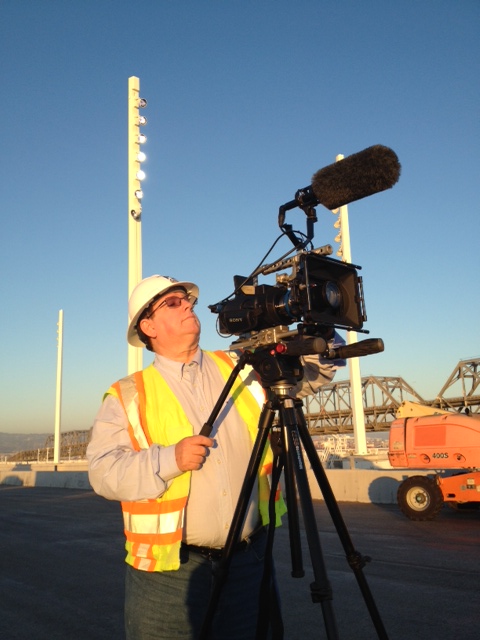
"The best part of my job is getting to climb the bridge," he says. "If you look at the very top of the tower, I can say I've been up there. I've been up at the top about half a dozen times, I guess. You climb a ladder above your head, then you climb a fence. You're tethered when you go up, because it's a long drop."
When standing at the top of the tower, Jones "can see the world".
"You can see all of San Francisco, the Golden Gate Bridge, you can see everywhere. It's a spectacular view."
Jones, who worked in radio in Kansas City for years before becoming a television reporter and anchor in markets like Orlando, Phoenix and Miami, certainly had the proper credentials for this job.
"How lucky am I?", he asks. "24 years at KRON, and I essentially retire. And then I get to do what I love to do most, which is cover tranpostation, and I work for the agency that is all about transportation."
Jones says there is definitely life after television news.
"If I could pass on a message to people in TV, there is life after TV," he says. "And you can still do what you love and do what you're good at. You just need to find your niche. Mine was transportation. I'm still a storyteller."
|
|
America's Cup On San Francisco Bay
Bounty For Local And National Broadcasts
Technology Helps Fans Learn More About The Yacht Races
| |
By Patty Zubov
Chapter Marketing Chairperson
If you won't be along San Francisco's shoreline this September to witness the 34th America's Cup final yacht races in person, there are various other ways to experience the culmination of the "Summer of Racing."
NBC will air the bouts live nationally on Saturday, September 7 and Sunday September 8, from 1 to 3 p.m. Pacific time each day. NBC Sports Network will carry subsequent races from 12:30 to 3 p.m. PT on race days from September 10 on. Locally, NBC Bay Area KNTV is showing many of the races. The complete international broadcast schedule is viewable online at
http://www.americascup.com/en/about/broadcast
The America's Cup YouTube channel offers a bounty of options to watch - and to better understand - the final races, past races and many facets of the America's Cup culture, venues and technology.
www.youtube.com/americascup
Advances in technology have helped America's Cup become more of a spectator 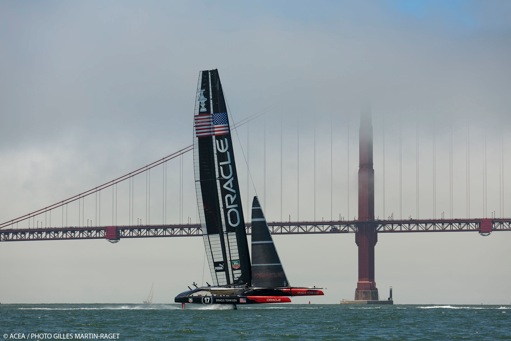 sport. "There was a need to make it more exciting, to appreciate what sailing is all about - the athleticism, strategic and practical aspects, and the technology behind the sport," says Design Executive for Oracle Team USA, Dirk Kramers. "For television production, the data off the boat is immediately visible to the viewing public." sport. "There was a need to make it more exciting, to appreciate what sailing is all about - the athleticism, strategic and practical aspects, and the technology behind the sport," says Design Executive for Oracle Team USA, Dirk Kramers. "For television production, the data off the boat is immediately visible to the viewing public."
The innovative technology facilitating viewing is AC LiveLine - the same graphics technology that highlights the yellow first-down line in NFL games and identifies cars on the track during NASCAR races. For America's Cup, it overlays graphics on top of the ACTV live broadcasts so that hard-to-see or hard-to-understand features of sailing are visible at a glance: racecourse, boat speed, wind direction, penalties, etc. More about AC LiveLine - including behind the scenes explanations from Emmy� Award-winning developer, Stan Honey - is viewable on the AC YouTube channel at
http://youtu.be/r0LH5cCuc_4
Jack Griffin, America's Cup expert, frequent speaker and editor of CupExperience.com, says, "Once a new spectator has enjoyed the eye candy of wings and hydrofoiling, they move on unless they are welcomed and educated about what to look for and how to watch." The website CupExperience.com provides videos and annotated photos in articles, newsletters and free eBooks that engage the audience and help them become more intelligent fans.
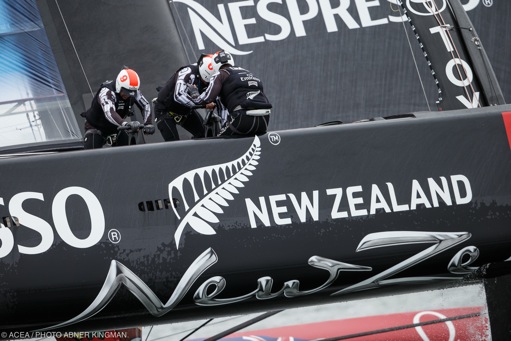 With the Official America's Cup mobile app, you can follow racing with video, audio channels off the boats and a range of content, including the Virtual Eye 3D sailing viewer. The app is also a good place to find AC Schedules, News, Results and fan engagement posts. With the Official America's Cup mobile app, you can follow racing with video, audio channels off the boats and a range of content, including the Virtual Eye 3D sailing viewer. The app is also a good place to find AC Schedules, News, Results and fan engagement posts.
At America's Cup Village along SF's Marina Green (the starting line area), and at America's Cup Park at Pier 27 (the finish line area), big screens offer another opportunity to get close-ups, aerial views and commentary during the races and in replays.
Who's racing? Teams eliminated in August were Sweden's Artemis and Italy's Luna Rossa. Therefore, beginning September 7, Emirates Team New Zealand will challenge the defender, Oracle Team USA, to claim the America's Cup silver trophy. There will be two contests of these 72-foot dual-hull catamarans per race day, lasting about 30 minutes each race. First to win nine (best of 17) is the 34th America's Cup defender. There are plenty of ways to watch if the trophy will stay in the United States, or return to New Zealand.
Patty Zubov is SF/NorCal NATAS Marketing Chairperson.
Background on America's Cup and more of her interview with Dirk Kramers of Oracle Team USA is at http://luxuryinprogress.com/flying-yachts/
|
|
60 Years On The Air For KOLO
Reno Station Celebrates Broadcasting Milestone In Big Way
|
By Ed Pearce Special Contributor to Off Camera
(Editor's Note: This is the first of a two-part series on KOLO's celebration of its first six decades on the air.)
September 27, 1953 was the beginning of an new era in northern Nevada.
Television had arrived as KZTV, Channel 8 signed on the air. Anticipation had been running high for months. TV sets had been selling fast even at what were then high prices.
A typical program day ran from sign on at 4:30 in the afternoon through 11 o'clock and featured programs from all 4 networks, a lineup that varied from Time for Beany to Groucho Marx to Bishop Fulton Sheen and a range of local shows produced in the station's studios with its single camera.
Two days after its first broadcast, locals gathered around those new sets to watch the first  big special event seen on local TV: the 1953 World Series, between the New York Yankees and the Brooklyn Dodgers. big special event seen on local TV: the 1953 World Series, between the New York Yankees and the Brooklyn Dodgers.
Three years later, the station's call letters were changed to KOLO. The station and the community was also changing with the times. The station broadcast news and sports from the beginning, but the station and the community were ready to move on from rip-and-read.
KOLO News never looked back, covering the stories that made northern Nevada history from the big breaking stories: beginning with the Golden Hotel fire in 1962, the prison hostage crisis (for which KOLO's Tad Dunbar helped resolve), the Slide Mountain collapse that roared into Washoe Valley, destroying homes, and the 1997 New Year's Eve flood that left more than $500 million in damage.
KOLO was on the front lines of the area's biggest wildfires, in 2002 capturing the fatal crash of a tanker plane and winning an Edward R. Murrow Award for its continuing coverage of that tragedy and the aftermath, as well as seven regional Emmy nominations. In 2011, news crews covered the Reno Air Race disaster from its inception to the initial investigation by the National Transportation Safety Board. That coverage had crews working around the clock for several days.
At least once in all of those years, KOLO was more than a witness to a major news story.
On March 31,1977, KOLO was literally on fire.
 The station burned to the ground, but the following Monday, it was back on the air with a newscast from a temporary location, picking up the pieces in the years following to continue its commitment to the northern Nevada community -- building its legacy one news story at a time. The station burned to the ground, but the following Monday, it was back on the air with a newscast from a temporary location, picking up the pieces in the years following to continue its commitment to the northern Nevada community -- building its legacy one news story at a time.
KOLO was the pioneer in bringing local television to the market, and 60 years later, it is still paving the way in the new era of digital broadcasting. In 2004, viewers started seeing a brand-new digital signal, and in 2010, they were able to watch their favorite local news in high-definition.
Today, KOLO 8 News Now brings stories to viewers using technology unique to the market. With the most experienced team in northern Nevada, KOLO takes its audience to the news faster than ever before, on air, online and on the go, but with the same commitment to its community that was forged 60 years ago.
To celebrate, KOLO has scheduled a birthday party at the station Oct. 11. With an anticipated guest list of more than 300 people, we want to thank those who have helped KOLO through its six decades with an anticipation of many more.
(Ed Pearce is a veteran news reporter at KOLO. He has been a part of the Reno television landscape for decades.)
|
|
Lessons From A Watering Can
A Portrait Of Kim Stephens' 25 Years In Television
|
By Ashley Taylor Special Contributor to Off Camera
I keep a picture of a watering can on my desk.
It's fairly innocuous, and if you saw it, you might think I have some love of gardening, or that it's perhaps referencing some sweet lesson about growth. You'd almost be right.
In actuality, that watering can is there because about 5 years ago, when I was a baby producer on the midday news show, there was one day when we were dealing with a particularly tense breaking story. Things went a little awry, as they are want to do, and I let aspects of the show get away from me. This story ends with the sunniest anchor in Fresno telling me after the show, very sweetly, that I needed to find a watering can and grow a pair.
To be fair, she was right.
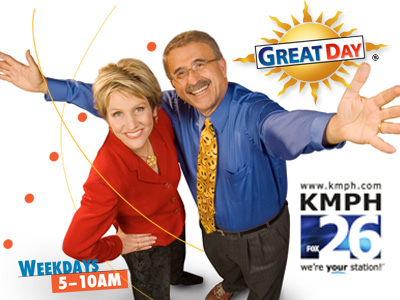 Kim Stephens just celebrated 25 years in this business. Her resume reads, I suspect, like many who hit this milestone. She started at KERO in Bakersfield, ended up at WBIR and WVLT in Knoxville, Tennessee, then moved back to California to work at KNTV in the Bay Area, then to KMPH in Fresno, where I was lucky enough to meet her. Kim Stephens just celebrated 25 years in this business. Her resume reads, I suspect, like many who hit this milestone. She started at KERO in Bakersfield, ended up at WBIR and WVLT in Knoxville, Tennessee, then moved back to California to work at KNTV in the Bay Area, then to KMPH in Fresno, where I was lucky enough to meet her.
If you look at the resume a little more closely, you'd realize she's more than just an anchor-- she's the person you bring on when you're starting a new show. She started Live at 5 at WBIR, Volunteer News at 7pm at WVLT, and when our show, Great Day, launched in October of 2003, she was brought in to start things off. Anyone who's worked with her, or even just watches her, understands why she's the one you turn to when you kick off a new show. This is an anchor who has an instant connection with viewers. This is an anchor whose laugh is so infectious, there are YouTube montages dedicated to it. She's the sort of person you trust to tell you the news, but you want to hang out with afterward. Really, she's the sort of anchor you think you know. (I know this to be true, because of the handful of times I've gone to the gym with her to work out. "Tried to work out," would really be more accurate, because every time we'd switch stations, inevitably someone would recognize her and want to chat-- usually about fairly personal things. And of course she would be completely warm and friendly-- that's the kind of person she is.) You feel like you know her, because really, you do.
However, what you won't find on the resume is my favorite story, which she told me right 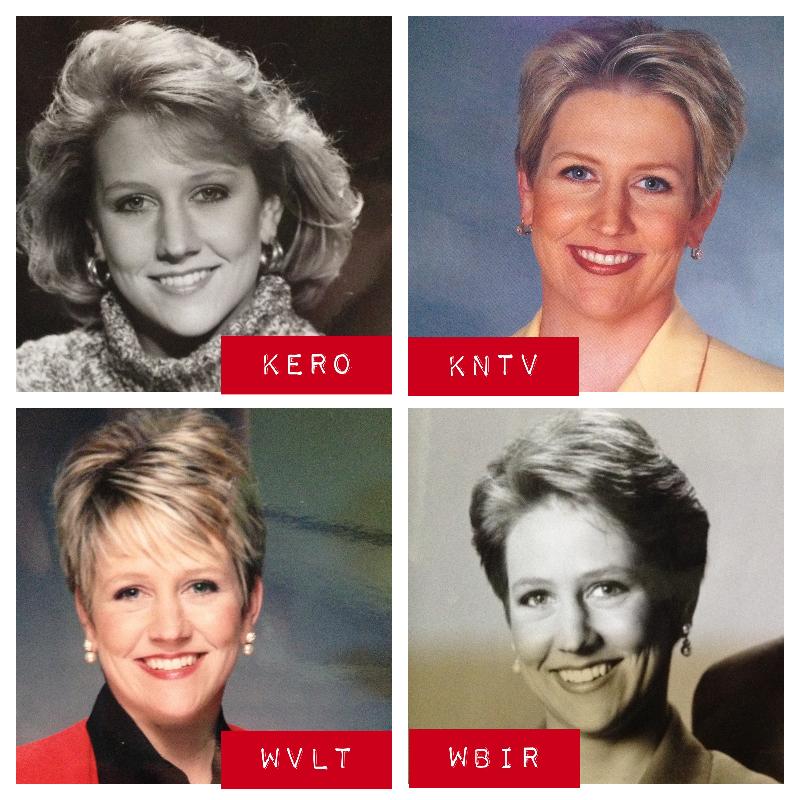 after I started working at the station with her. It was her first gig, in Bakersfield, and she was going out on her first story. She told me there was this moment where she panicked and thought, "What am I doing here?" She said she was so worried until she realized, "Wait a minute. Those people don't know that I don't know what I'm doing. These people think I'm just a regular reporter." So she squared her shoulders, shook off the fear, marched up and covered the story. after I started working at the station with her. It was her first gig, in Bakersfield, and she was going out on her first story. She told me there was this moment where she panicked and thought, "What am I doing here?" She said she was so worried until she realized, "Wait a minute. Those people don't know that I don't know what I'm doing. These people think I'm just a regular reporter." So she squared her shoulders, shook off the fear, marched up and covered the story.
I think most of us have this moment in this career. We're in a business where we're supposed to know things-- a lot of things. We're supposed to know the minute inner-workings of a story we may have just been briefed on. We're supposed to remember that one name from that one case we covered three years ago. But there's a unique power that comes along with believing that we actually do know it. Or at least believing we know enough to make it work. Or barring that, knowing that no matter what, we have to square our shoulders and cover the story.
Working with Kim is a lesson in learning a new language. Problems are called "opportunities," for example. Everything is a path to some form of growth, and every day we try to be better. For a solid three years, when I was her midday producer, we would sit down an hour before the show and go over my writing, sentence by sentence. This should have been terrifying, but it was always my very favorite time of day. Learning with Kim is never scary, because everything comes from that same positive place. I wanted to be better and she knew that. So we worked.
 | |
Great Friends
Kim Stephens with producer,
Ashley Taylor
|
One year in my birthday card she wrote a long story made entirely of news cliches-- one after the other, everything she had helped banish from my vocabulary. It was hilarious, but it was also a little triumphant-- I didn't write like that anymore, so now we could joke about it.
In one week, I will move to New York and start working for a major news organization that, let's just say, rhymes with "Fox." Sometimes I wonder if maybe, every now and then, she glances over at me and sees that same little producer who thought she didn't know how to write, when really, she just needed to find her moxie. I know I sometimes still feel like that girl. But then I think of that other girl, who swallowed her fear and marched to her live shot. Because she's right. Sometimes we do just need to grow a pair.
Sometimes I wonder if she will ever know what she has been to me as my mentor and my friend, or just how much I will miss her.
I'm bringing my watering can with me.
(Ashley Taylor recently wrapped up a six-year stay at KMPH in Fresno, where she worked as an assignment editor, news writer and producer. She begins a new job with Fox News Channel this month. Read more about her latest career move in "TV A Go Go", below.)
|
|
KQED Preparing For Big Launch
Of Newsroom In October
Vu, Shafer Ready For 21st Century Incarnation Of Legendary Show
| |
By Kevin Wing
Chapter Vice President, San Francisco
Newsroom, a name synonymous with KQED Channel 9 from 1968 through the 1970s, is returning to the station's airwaves this fall in the form of KQED Newsroom, a new program that succeeds This Week in Northern California, a station mainstay for two decades.
KQED is announcing KQED Newsroom as a new multi-platform service for television, radio and online, and three-time Emmy Award-winning journalist and anchor Thuy Vu will be its host.
Scott Shafer, the award-winning host of KQED Public Radio's The California Report, will join Vu as senior correspondent.
The new weekly telev
ision program will build on the public affairs roundtable format that has been the core feature of This Week in Northern California, which KQED Newsroom will replace on its Friday evening television schedule. New segments will give viewers access to features and stories from all KQED News sources with newsmaker interviews, debate segments and field reporting.
The title, KQED Newsroom, is a nod to KQED's groundbreaking 1968 program, which was the first nightly news series on public television and informed the 1975 launch of the national MacNeil/Lehrer Report.
The new half-hour program, which will also feature a brand-new set, premieres Oct. 18 on KQED Channel 9. It will also air on KQED Public Radio 88.5 FM at 6 p.m. on Sundays..
-----
Editor's Note: In the October issue of Off Camera, Thuy Vu writes exclusively about her new program, KQED Newsroom. Watch for her story next month.
|
|
Gold & Silver Circle Profiles
| |

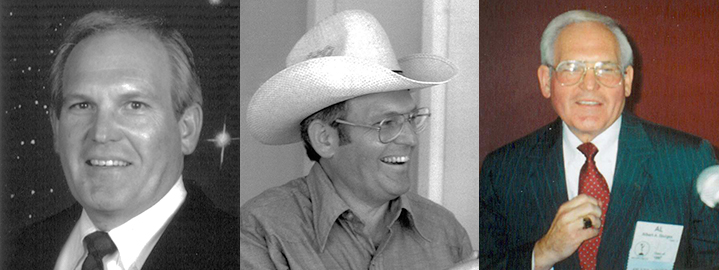 In a broadcasting career that spanned 53 years, Al Sturges practically did it all. Sturges is not only a television pioneer of the San Francisco Bay Area television market, his influence stretched beyond the Bay, to places like Chicago and Los Angeles. His love for broadcasting was so immense that when he retired from television, he plunged into radio, purchasing a station on California's Central Coast, to be followed later by a series of radio stations to which he would serve as general manager. Sturges, inducted into the Silver Circle of the San Francisco/Northern California Chapter of the National Academy of Television Arts and Sciences in 1986, celebrated his 80th birthday last month. He spent his birthday weekend traveling with his wife of 40 years, Dorothy, from their home in Palm Desert to the Bay Area to visit family. To learn more about Sturges and how he became interested in a career in broadcasting, we must go back to his early years of growing up in San Francisco. "I was always intrigued by broadcasting," Sturges says. "I was always listening to the radio when I was growing up. Growing up during World War II, radio was everything. Radio was always a part of my life." "I will never forget that Sunday morning, December 7th, 1941," Sturges recalls. "My mother was listening to the New York Philharmonic broadcast on CBS radio. My father, brother and I were in front of our house, on Juanita Way in San Francisco, tossing the football around. My mother called us in to hear the frightening news." Pearl Harbor had been bombed, and with that, the United States entered the war. Sturges says "radio had the ability to transport you by the turn of a dial, not only across the nation, but to foreign lands and into the fifth dimension." While still in high school, Sturges' broadcasting career began. "It started one morning in 1948 at Lincoln High School in San Francisco," he says. "My homeroom teacher, Mrs. Blenerhassett, mentioned to me that KGO-AM's sportscaster, Ira Blue, was seeking a young high school student to serve as a production assistant for his nighly ABC Radio Network sports-interview program." Sturges got the job. It was an opportunity of a lifetime, for Sturges had known about the famous art-deco facility known as Radio City Studios, located at 420 Taylor Street in San Francisco. "It was a chance to work there," he says. That same year, television was about to make its debut in the Bay Area. KPIX Channel 5 was the first station to sign on, in December of 1948. Sturges was fascinated with television as much as he was with radio, and he landed a part-time job as a film editor and floor manager at KPIX. "I was one of the station's first part-time employees," he says. "One of my jobs was to take all the kinescope recordings, walk across the street to the Mark Hopkins Hotel, where our transmitter and telecine were located. In those days, the station was located on Bush Street adjacent to the hotel. I would bring the recordings to telecine where they would be put on the air." While at KPIX, Sturges also worked on the station's newscast, anchored by William Winter. He also worked on The Del Courtney Show, The Faye Stewart Show, The Edna Fischer Show and Family Vespers. Sturges also worked on a weekly children's show, Pow Wow Indians. Keep in mind that Sturges was still in high school when his career began. 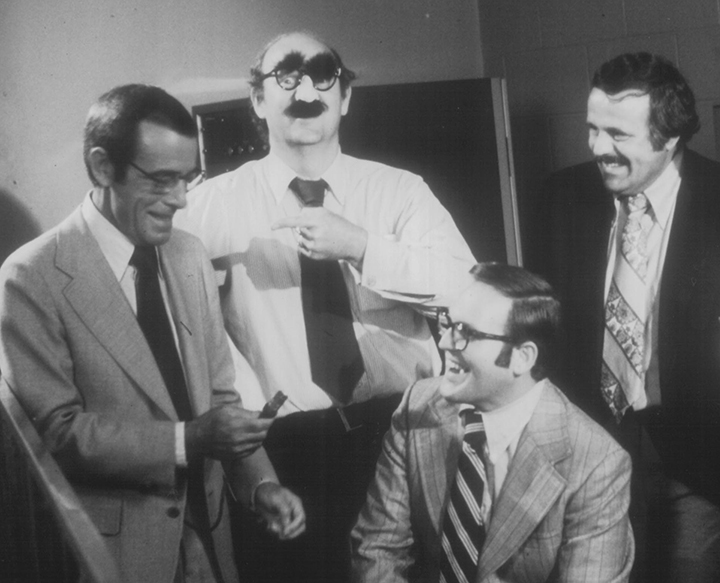 But, high school football came calling, and Sturges temporarily gave up his television career briefly to take on the challenges of the Lincoln High School gridiron, where he played guard. As high school graduation was approaching, Sturges' teacher, Mrs. Blenerhassett, suggested that he enroll in the broadcast communications program at San Francisco State College. So he did. In 1950, Sturges was hired at KQW-AM (now KCBS-AM) as an usher for The Red Blanchard Show. The program was one of the last comedy-variety radio programs with a live 10-piece studio orchestra. "The station's studios, in those days, were located in the famed Palace Hotel, and it was a wild scene when Red's audience stampeded through the Palace's sedate lobby," Sturges recalls. That same year, Sturges was hired as a part-time film editor at KGO-TV. The following year, he was back at KPIX, producing and directing dramatic vignettes for the Family Vespers program. Many jobs, and a lot to juggle for a college student. Sturges was still attending classes at San Francisco State while he worked. In 1952, KGO-AM hired him to be a writer and producer of Cooking with Music, which was also aired by the ABC Radio Network. In 1954, Sturges graduated from San Francisco State with a bachelor of arts degree and a lot of broadcasting experience under his belt. And, he was just 21 years old. That same year, he was back at KGO-TV, where he would begin a seven-year stint there as a production assistant, stage manager and assistant director. Sturges worked on numerous programs there, including The Jack LaLanne Show, San Francisco Tonight with Don Sherwood, Bing Crosby Golf Tournament from Pebble Beach, Queen for a Day, William Winter News and Comment and Billy Graham's San Francisco Crusade. While working at KGO-TV, Sturges, who, by then, had earned a reputation for having quite the drive to want to work as much as he could, took on freelance positions: in 1955, he worked for KQED-TV as director of Speeding Your Reading; and, in 1960, he directed San Francisco Giants baseball telecasts. But it was around 1961 that Sturges had read an article in Broadcasting magazine that a new television station was about to go on the air in Portland, Oregon. "Here was my opportunity," Sturges says. "I had always been put off by applicants for creative positions who submitted a standard resume for a job. So, I decided to submit my resume - in fortune cookies. I typed up all the highlights in my 'show business career' and set off to find a fortune cookie bakery in Chinatown." Soon, Sturges sent off his "resume". Bill Hubbach, the newly-appointed general manager at KATU in Portland, responded to Sturges' unique resume with the following Western Union telegram: "Have made reservations for you at the Multnomah Hotel. Send more fortune cookies." "My interview at KATU exceeded my expectations, and I left the interview not being offered a position as a television director, but as the program manager of the new station," Sturges explains. At that time, Sturges, all of 28 years old, was one of the youngest program managers in a major market. Sturges' programming highlights at KATU during his tenure there included the station's inaugural broadcast featuring actress and Portland native, Jane Powell; 1964 election night coverage with Oregon Gov. Mark Hatfield as KATU's political commentator; and coverage of numerous sporting events, including Oregon State University football games and Portland Beaver baseball games. Hatfield's exclusive commentaries on KATU, unheard of at that time, made headlines in The Oregonian and in Newsweek. But, the exclusive affiliation with KATU scooped the station's competition. In 1964, Sturges was facing turmoil; his mother was dying of cancer in San Francisco, and he was making frequent trips to the family home from Portland to be with his mother and father during this difficult time. At the time, KATU was also riding a wave of success, and the rest of the country was watching. Sturges was fielding numerous job offers elsewhere, including one from KTVU, in Oakland. He was also being wooed by Elton Rule, the general manager of KABC-TV in Los Angeles, who was offering him the position of assistant program manager there. But, Sturges chose to be closer to home and accepted an offer to be KTVU's new program manager, beginning in 1965. It was short-lived. "I knew that Bill Pabst, former co-owner and general manager (of KTVU), had held it against me that KATU had hired (news anchor) Les Nichols away from KTVU. But, I knew Les Nichols wanted to leave the Bay Area and had approached KATU about a position in its news department," Sturges explains. " At that time, KTVU's new general manager, Frank King, assured Sturges that Pabst was out of the picture, retired, and living in Hawaii. "Much to Frank King's and my surprise, Pabst returned from Hawaii and was back at KTVU, and my days were numbered," Sturges says. Sturges left KTVU in 1966. Unfortunately, the KABC-TV position was already filled, but Rule helped Sturges land a job as an account executive at ABC Films in Hollywood. "My position at ABC Films gave me a new perspective on the television industry from the other side of the desk," Sturges explains. "At ABC Films, I gained insights into the production and distribution side of the television industry." Sturges was only with ABC Films for a year, but says during that time, he met "many wonderful station owners and program managers." He enjoyed working for ABC Films, but Sturges grew tired of being away from home. "My territory consisted of the 13 western states, and I was in the air Monday through Friday," he explains. "An awful life for a family man." In 1967, Sturges went to work for Kaiser Broadcasting Corporation, based in Oakland. The company was launching television stations across the country, including a new station in the Bay Area, KBHK-TV. But, the company needed Sturges' talents in Cleveland first, where WKBS-TV was going to sign on. Sturges secured the station's license, designed the studios and acquired the programming. By 1968, Sturges had returned to the Bay Area to become program manager at KBHK-TV. And, for Sturges, it was bittersweet to work at the station, because it was to be located at 420 Taylor Street in San Francisco, the same Radio City Studios where Sturges began his broadcasting career 20 years before. The Kaiser station saw tremendous growth in the five years Sturges was there as program manager. One of the stalwarts of the KBHK-TV schedule was The Joe Dolan Show, along with Point of View, hosted by Jerri Lange. Terry Lowry also served as substitute host. In 1969, KBHK-TV got a big break when KRON, wanting to expand its early evening news programming, made plans to sell off some of its programming inventory, which included reruns of The Flintstones - a big hit since its network debut on ABC in 1960. Sturges made it known that he wanted Fred, Wilma, Barney and Betty on the Channel 44 schedule. "The Flintstones became a cornerstone of KBHK-TV's late afternoon programming," Sturges says. In 1972, Sturges purchased reruns of Hogan's Heroes, which had ended its popular CBS run the year before. "I scheduled two half-hour episodes back to back in the early evening." Sturges says. He also persuaded actor Werner Klemperer - Hogan's Col. Klink - to record stay-tuned announcements that would run in between the episodes. The programming was a ratings smash for KBHK-TV. Later, Sturges added sports programming to the schedule, including live broadcasts of Golden State Warriors basketball games and Oakland A's baseball games. Sturges' successes with KBHK-TV were certainly recognized, enough that Kaiser Broadcasting wanted him to run a station in Chicago that it was about to acquire. They wanted him to be station manager of WFLD-TV. The year was 1973. "As station manager, I would be responsible for all aspects of the station's operation except for sales and engineering," Sturges says. "I was thrilled." Sturges remained with WFLD-TV and Kaiser until 1977. In 1977, Sturges switched gears, returning to his radio roots. He returned to California, and purchased KQSB-AM in Santa Maria. He had grown tired of corporate politics in Chicago, and it was time for a change. Time for Sturges to be his own boss. Not only did he own the station, he was its general manager. In 1984, Sturges became general manager of KTOB-AM, in Petaluma/Santa Rosa, closer to his Bay Area roots. In 1985, he would make a decision to return to the Central Coast, serving as general manager or station manager for a series of AM and FM stations in Santa Barbara. In 1998. he joined Clear Channel Communications, becoming local sales manager for seven Santa Barbara radio stations. During his three years with Clear Channel, Sturges also served as an adjunct professor at the University of California, Santa Barbara, the University of LaVerne in Oxnard, and Allan Hancock College at the U.S. Penitentiary at Lompoc. During his 53 years in broadcasting, Sturges' career took him from San Francisco to Portland, Los Angeles, Philadelphia, Cleveland, back to the Bay Area, Chicago and Santa Barbara. Throughout his career, Sturges made a point to be involved in the communities he served. Looking back, he says his years in Portland were the most memorable for him. These days, Sturges and his wife live in Palm Desert, and visit the Bay Area regularly to see their four grandchildren. |
|
Soundbites
|

Anne Makovec has been working as a reporter and anchor at KPIX 5 in San Francisco since 2011. The Wisconsin native says she's very happy to be living and working in the City by the Bay, adding it's a far cry from her hometown. This month, find out more about Anne, how she became interested in journalism, who has inspired her the most, what's her favorite ice cream flavor, and more.
Where did you grow up?
Medford, Wisconsin.
Do you have siblings? If so, are you the oldest? Youngest? Middle?
I am the middle child. I have an older sister and a younger brother.
When did you first realize, and at what age, that you wanted to work in
television news?
I fell in love with journalism in high school, after writing an editorial on why I didn't think physical education should count in your GPA. I saw the waves it created and realized the power of the pen. The TV stuff came in college - when I saw a sign for anchor tryouts for the college TV station.
Who has inspired you in your career? As a person?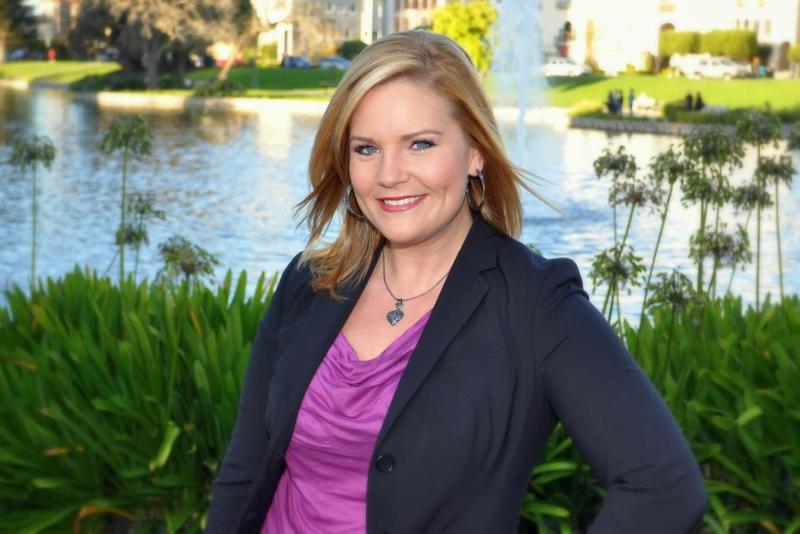
My mom has inspired me in both - always supporting and believing in me no matter what the dream.
Before KPIX, where did you work before?
I started in TV at a cable station outside of Atlanta, then WQOW in Eau Claire, WI, KION/KCBA in Salinas, KGO-TV in San Francisco, and KXTV in Sacramento.
As a journalist, every day at work is different from the one before it. Can you describe a "day in the life of Anne Makovec"?
The alarm goes off in the wee morning hours (and then it goes off again after at least one tap of the snooze button!) Up and at 'em! The first part of the AM shift is almost always devoted to live shots covering overnight or breaking news for the 4:30 AM - 7 AM broadcast. I can end up anywhere in the Bay Area on a moment's notice. After the KPIX Morning News, we take a quick break and then get moving to turn a package for the noon broadcast. After work, I work out, take walks, or meet up with friends. Then it's off to bed, often in the early evening hours.
What are your favorite types of stories to report on? Your least favorite?
I enjoy reporting on local political issues of substance, stories that are serious and consequential without being downright depressing (most of the time). My least favorite stories are those that involve unexpected misfortune, like car crashes or random shootings. It's so scary to think such unforeseen circumstances could befall any one of us at anytime.
What's your favorite ice cream flavor?
Strawberry Cheesecake
Have a guilty pleasure?
Judge Judy
What do you enjoy most about your work?
The immediacy of television news, the ever-changing landscape of assignments, and the ability to provide a balanced and informed report which illuminates and explains important issues or events.
Do you have any mentors, and if so, who? Who do you look up to?
I have been so very fortunate to work with smart and able broadcast journalists throughout my career, from the time I was an intern at the CBS Network News in New York, to this very day. It would be hard to single out any one individual, as so many have contributed to my growth as a reporter and anchor. Just being a member of the Bay Area press forces me to keep challenging myself and striving to improve. My colleagues in this market, rival and otherwise, bring their A-game every day. I'm proud to be a part of the mix, and inspired to keep learning and improving.
What do you do to relax? What hobbies and/or activities are you involved with?
Walking around the city, baking, and spending quality time with my friends and family. In the past couple of years, I've been fortunate to volunteer with the Boys & Girls Club of Oakland, and on a few occasions, Glide Memorial Church in San Francisco.
What do you like most about working at KPIX?
My co-workers - I get along with everyone. I also get the chance to do a wide variety of work - from breaking news to pet segments.
Where do you see yourself in five years?
I love working and living in the Bay Area. There's no other place I'd rather be than right here.
Who is your favorite television journalist? Is there anyone in the business who you emulate?
I wouldn't say I emulate her, but I respect Barbara Walters. Even though she can be quirky, she's trusted and beloved. I've got a little thing for Diane Sawyer as well.
Who is your favorite author?
F. Scott Fitzgerald
San Francisco Chronicle, or USA Today?
Both
Personality-wise, are you more of a goof than you are serious?!
I'm both - depending on the time of day, the duties in front of me, and the company I'm in. I tend to be pretty business-like at work, but there are plenty of people out there who could attest to my lighter and fun-loving side.
If you could do it all over again, is there anything you would change about your life?
Not a thing.
Any words of wisdom for the next generation of broadcast journalists?
Learn a little something about everything. Inquisitiveness and curiosity are valuable attributes. Don't be intimidated. Don't be afraid to ask hard questions. That's your job, after all.
Giants, or A's?
Giants
Favorite vacation destination?
Somewhere with a good swimming beach - Hawaii is always good.
During your career, has there been a story that you've "owned" that, up to now, has defined who you are as a journalist?
I did a lot of work on the Jaycee Dugard/Phillip Garrido case when I worked in Sacramento. It was a compelling, fascinating, and heartbreaking story all wrapped up in a complicated mess. It didn't alone define me as a journalist, though. I don't think any designation of whom one is professionally can be ascertained by a single story, unless of course, you happen to be Bob Woodward or Carl Bernstein.
What's the most favorite thing about your job? Least favorite thing, if anything?
I love being able to experience so many things in the field - good and bad, funny and dramatic - and never knowing what's next. The least favorite thing has got to be the early AM hours.
Favorite music? What's in your iPod (if you have one) or collection of CDs? Favorite TV show (besides KPIX 5 News)? Favorite movie?
I have very eclectic music taste - much of it from the 60's and the 80's. On TV, I love news magazines, like 20/20, Dateline, and 48 Hours. Favorite Movie? Anything Disney.
Wine tasting, or a cold bottle of beer?
Wine tasting
What's the craziest thing you've ever done?
Jumped in the ocean with my clothes on, more than once. I'm a sucker for warm water and a tropical breeze. I know it's not that crazy, but it's the best I've got.
From a journalistic standpoint, how would you prefer viewers to see you?
Capable, approachable, compassionate, and real.
Favorite spot in the Bay Area?
Downtown San Francisco
What do you like about social media, such as Facebook, Twitter and Google Plus? Does it help bring in new viewers?
I enjoy the real-time nature of communicating with viewers, whether it's getting tips and feedback, or posting new information for a story. Social media clearly is a permanent weave in the fabric of our profession. But I know television executives here and across the country are continually struggling with how to best utilize the different avenues & platforms as they relate to viewership. I don't know how many new viewers social media actually brings in, but it certainly doesn't hurt.
Stay tuned: In the October issue of Off Camera, KGO-TV ABC7's Mike Shumann will be featured in Soundbites. Learn all about the popular San Francisco sportscaster and former 49er next month. |
|
| |

Last month, I had a biopsy. And two weeks after that biopsy, I found out I had cancer. Not pre-cancer... the real deal. Basal cell carcinoma.
I've learned it's one of the most common types of skin cancer, but knowing that I now join 2.2 million other Americans diagnosed each year doesn't make my diagnosis any less daunting or serious.
I'm still dazed in disbelief. It's not because I'm not a likely candidate. I admit it, I am. I grew up in the sun. As an active athletic kid, staying indoors was not an option. I can still hear my mom's repeated warnings at the sight of my golden tan or raging sunburn, "You better stay out of the sun. You'll get freckles. Worse yet, you'll get skin cancer." Well, once again, Mom was right.
As a youngster and young adult in my 20's, I spent my summers on the tennis courts, by the pool, or on a boat or bike. Winters didn't keep me from being a UV target either. I lived on the mountain and skied competitively, so in reality, I clocked in thousands of hours under the sun on the glorious slopes of Lake Tahoe.
What actually shocks me about the cancer diagnosis is the benign nature of the tumor. I've read the rules for skin cancer and examined the well publicized graphic photos, but my lesion doesn't resemble any of the textbook examples. There is NO discoloration. It's not brown, black or red. In fact, my doctor described it as "translucent".
It's one of those things I noticed while putting on my makeup some time ago. I casually thought about getting this small 'bump' removed someday, but considered such action as purely cosmetic and neither a big deal or urgent. However, during a routine head-to-toe skin cancer exam, my dermatologist regarded the bump as suspicious.
What Is Basal Cell Carcinoma?
Cancer of the skin is the most common of all types of cancer. Basal cell carcinoma accounts for 8 out of 10 skin cancers and usually develops on areas exposed to the sun, such as the head, face and neck, but they can occur anywhere. It affects people of all ages. This type of cancer tends to grow slowly and it's very rare for basal cell carcinoma to spread to nearby lymph nodes or to distant parts of the body. Nevertheless, because it can invade and cause significant destruction of surrounding tissues and bone beneath the skin, it is still considered malignant. Over fifty percent of the people diagnosed with one basal cell cancer will develop a new skin cancer within five years.
Treatment
I'm scheduled for surgery a month from now -- not my choice, but I couldn't get in any earlier. My doctor will be using the Mohs technique, a complex microscopically-controlled surgery also known as chemosurgery. It was named after the general surgeon who invented it, Frederick E. Mohs. In this technique, the surgeon removes a very thin layer of the skin (including the tumor). The surgeon/pathologist maps, freezes and cuts the tissue, then examines the sample under a microscope. If cancer cells are still present, the next layer is removed and examined. This is repeated until the skin samples are free of cancer cells.
The process is very precise, time-consuming, and expensive, but it's one way to obtain complete margin control and a high cure rate (between 97% and 99.8%). I was warned it may take several hours to complete, but it means more normal skin near the tumor can be saved which will create a better outcome after the surgery. One of the advantages of Mohs surgery is that I'll know my results right away and all the cancer will be removed at the time of my surgery.
Prevention
I'm sharing my story, so you don't repeat my mistake. Don't brush off any changes on your skin as "nothing". Protect yourself and your kids.
1. Limit ultraviolet (UV) exposure. UVA rays age cells and can damage cells' DNA. UVB rays can directly damage DNA and are a more potent cause of sunburns and skin cancer. To protect yourself, follow the "Slip, Slop, Slap, and Wrap" catch phrase.
-
Slip on a shirt. Dark colors generally protect more than light colors. Tightly woven fabric also provides more protection. Dry fabric is generally more protective than wet fabric.
-
Slop on sunscreen. Use sunscreen and lip balms with sun protection factor (SPF) values of 30 or higher. A palmful of sunscreen (about 1 ounce) is recommended to cover the arms, legs, neck, and face of an average adult. Remember to reapply if you sweat, swim or towel off.
-
Slap on a hat. Your hat should have at least a 2- to 3-inch brim all around and be made of tightly woven fabric. A baseball cap can only protect the front and top of your head and not the very vulnerable areas of your neck and ears.
-
Wrap on sunglasses to protect the eyes and sensitive skin around them. Wear wrap-around sunglasses with at least 99% UV absorption.
NOTE: UV rays can come through light clouds, can reflect off water, sand, concrete, and snow, and can reach below the water's surface.
2. Seek shade. This is especially important when UV light is strongest: between 10 a.m. and 4 p.m.
3. Avoid tanning beds and sunlamps. Tanning lamps are not harmless. They give out UVA and usually UVB rays as well which can both cause long-term skin damage and skin cancer.
4. Avoid harmful chemicals. Exposure to certain chemicals, such as arsenic, can increase your risk of skin cancer. Arsenic is a heavy metal found naturally in well water in some areas, pesticides and herbicides, some medications, herbal remedies, and in certain occupations.
5. Be extra cautious if you're a man. Men are about twice as likely as women to have basal cell cancers which can be attributed to higher levels of sun exposure.
6. Get your daily dose of vitamin D from your diet. Recent research has found that vitamin D has many health benefits. It's made naturally in the body when UV rays from sunlight strike the skin and is the primary source of vitamin D for the majority of people, other than supplements. Fatty fish (i.e., salmon, tuna, and mackerel) and fortified foods (i.e., milk, ready-to-eat breakfast cereals, orange juice, and yogurt) provide most of the vitamin D in the American diet.
7. Check your skin regularly. There is evidence that skin cancer deaths could be lowered by as much as 63 percent if people performed monthly self-exams. Have a dermatologist do a full-body exam first to assure that your existing spots, freckles, or moles are normal or treat any that may not be.
I'm still waiting for the diagnosis on another lesion that was sent to UCSF for a second opinion. So with that said, be diligent and cautious. A small investment of time can make all the difference.
Fit Tip: When outdoors, use the "shadow test". If your shadow is shorter than you are, the sun's rays are the strongest, and it's even more important to protect yourself.
|
Here's Lookin' At You, Anchorwoman
TelePrompTer In Fresno Has A Mind Of Its Own --
Or Is Machinery Inside Studio At KFSN-TV Really Haunted?
|
By Stephanie Stone
Chapter Governor
I've never been one for scary movies or ghost stories. I consider myself a factual news person. I depend on information and I prefer it come from three different sources.
For this story, I can drum up more than three newsroom sources at KFSN ABC30, all of whom will relay similarly bizarre "TelePrompTer tales".
These are the stories of ghosts. Maybe a computer virus. Regardless of what it is, this ghost has some supreme talents. Even the most solid of anchors can't beat this dilemma- that is, when the ghost decides to take over.
But let me start from the beginning. It was a typical weekend morning. We had a lot of good content for a Sunday morning, and our newscast was going smoothly. We were in the "A" block, and I was reading an extremely sad story about two elderly people who died in a tragic house fire. The next story was supposed to be local, similarly sad in nature. The prompter crawled forward and I heard myself reading an introduction about a YouTube sensation. A "D" block story, about a drum playing prodigy of a Grandmother whose story had gone viral. It was certainly odd placement -- but, wanting a clean on-air product, I kept on going. There was no
 | |
No laughing matter
Is this TelePrompTer at KFSN-TV haunted?
Anchors and producers there think so.
|
video, no sound, no break for me to discuss this odd occurrence with the producer and director. Suspecting something strange, we decided to cut to break.
Immediately I asked the producer "what was that about?" He replied, "I honestly have no idea".
We thought it was a fluke, and decided to move on.
Then it happened again. It was a similar situation with odd story placement, no video and no sound. The story was, once again, in the wrong place, at the wrong time. Problem is, no one could figure out how it happened or why. When stories get jumped like that, it's impossible for master control to keep up, and it's similarly impossible for the producer to figure out where to go next.
Armed with our mass confusion, we decided- when in doubt, restart. The reload gave us a Rubik's cube of squares, in black, white and gray and sprawled across the screen. I stared at it in disbelief, as clearly there was no way to read the technological graphics. Luckily, I had my iPad. Or so I thought. Problem is, the iPad syncs with ENPS, which syncs with the prompter. When in doubt -- trust your director and producer, who then told me which stories to read and which ones to load on my iPad. It wasn't pretty, but we got through it, however painfully.
Once off the set, we stared at each other in wonderment. And then we laughed. What else can you do? It doesn't seem possible that a mysterious ghost could take over and start switching stories around. But no one else has any sort of conclusion. I can only hope I didn't make the ghost angry. I really don't want it to come back. Maybe it's the persona of someone who quit, or left the business, or really hated being a prompter operator. However it's happening, we're begging this mysterious entity to move on. Find another station to haunt, or maybe leave said tricks for Halloween, when we're not on the air.
|
|
Walt Grey To Anchor KXTV Weekend Morning News
Former KCRA Anchor Leaves Local Radio; Starts At CBS Affiliate Sept. 7
|
By Kevin Eck
TV Spy
Walt Gray, who spent 25 years at KCRA in Sacramento as a sports anchor and, later, as a
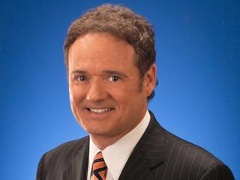 | |
Walt Gray
Returning to Sacramento TV
|
news anchor, is returning to Sacramento television after a brief stint as a radio show host.
Gray announced last month that he is joining CBS affiliate KXTV as weekend morning anchor.
His first day on the air will be Sept. 7.
Gray left KCRA, the NBC affiliate there, in 2012 to host his own radio show on 96.9 The Eagle. He was among several employees laid off in July.
Gray announced the news of his return to Sacramento television on KXTV's Sunday morning newscast, to which he was promoting his charity motorcycle ride.
"Walt is one of Sacramento's best known and most respected news anchors," says KXTV news director Jerome Parra. "He's done it all. He is a trusted voice and an accomplished storyteller."
Gray's wife, Monica Woods, is KXTV's chief meteorologist. Woods has worked at the station since 2001.
|
|
Karina Banda Leaves Mexico TV, Joins Sacramento Univision Affiliate As AM Co-Anchor
| |
 | |
Karina Banda
New Anchor at KUVS
|
It's a brand new day on KUVS.
Well, as far as its morning broadcast is concerned.
Karina Banda is the new co-anchor and reporter for A Primera Hora at KUVS, the Univision station in Sacramento.
Banda joins the station as a co-anchor and reporter for its morning newscast.
Previously, Banda worked at Televisa Monterrey in Mexico, where she co-anchored the evening newscast there.
She joins Maribel Lopez and Gustavo Ortiz on A Primera Vera.
The station's morning show airs from 5 to 7 a.m., Monday through Friday.
Banda's first day was July 29.
|
|
Ex-KTVU News Director Chapuis Lands At KTXL
Returns To Sacramento As ND After 10 Years In Bay Area
|
After 10 years as news director at Oakland's KTVU, Ed Chapuis is returning to Sacramento as news director of Fox affiliate KTXL.
 | |
Ed Chapuis
Back To Sacramento
|
Prior to joining KTVU in 2003, Chapuis worked at KCRA in Sacramento, first as a producer and executive producer, then later, as news director, from 1997 to 2002.
In 2003, Chapuis became news director at KTVU, filling the vacancy left by Andrew Finlayson, a longtime producer and associate news director there who became news director in 1999 following the retirement of Fred Zehnder, who had been KTVU's news director for 21 years.
Early in his career, Chapuis had also been a news director in Las Vegas. At KTXL, he replaces Brandon Mercer, who left the station in June after five years there.
|
|
TV A Go Go...
New Beginnings and Opportunities Around the Chapter
| |
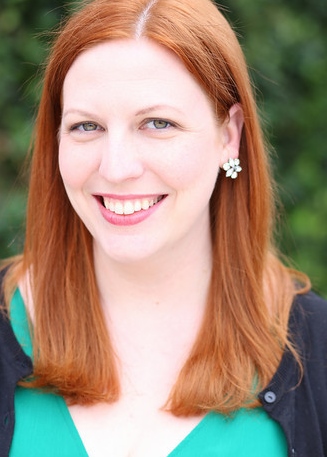 | Ashley Taylor
Next stop: Fox |
Ashley Taylor, producer of Great Day at KMPH Fox 26 in Fresno, is on her way to New York City and the Fox News Channel. Taylor is joining the network's Fox and Friends morning show broadcast as a writer beginning Sept. 3. Taylor began working at KMPH in 2007 as morning assignment editor. She advanced to producing the station's Midday News, followed by her current position as morning show producer. She is a Fresno State University graduate and a local community actress.
Jessob Reisbeck, weekend sports anchor at KMPH Fox 26 in Fresno, is moving to Milwaukee to join WITI as weekday morning anchor.
Brian Johnson joins KHSL-TV/KNVN in Chico as a news reporter. Prior to joining the stations, Johnson was an anchor, reporter and producer at WTVY in Dothan, Alabama.
Got a new gig? Get a promotion? TV A Go Go (formerly On The Move) and Off Camera want to know and help you spread the word! Please drop us a line at [email protected] and let us know! Congratulations! |
|
Do You Remember When?
| 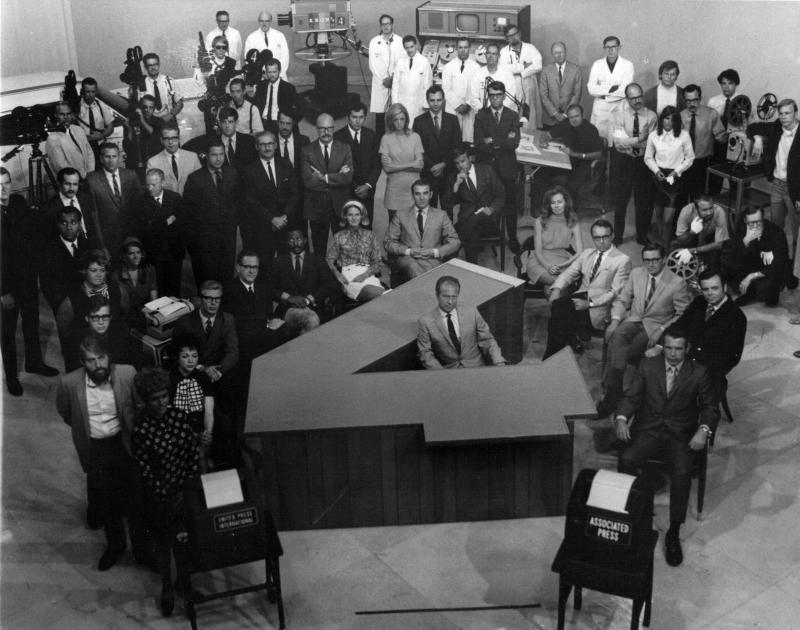
Not Every Studio Has A Big "4" In The Middle Of It... That's very true, but back in 1968, that's exactly what San Francisco's KRON-TV Channel 4 had in its studio. Of note in this photograph is that, unlike today, there were very few women and minorities working in television news in the late 1960s. No doubt, too, that the station wanted to show off the importance of its connection to the rest of the world with its teletype and wire-service machines (foreground) and its then-state-of-the-art equipment (background). What do you think the jobs were of the men in white lab coats? Film lab? KRON-TV, which made its debut as an NBC station in 1949, was just 19 when this photograph was taken. It remained with NBC until 2002. |
|
Local Fundraising Is What It's All About At KRCB
|
By David Waxman
Chapter Governor
I'm the senior television producer at KRCB North Bay Public Media, based in the heart of Sonoma County Wine Country, 50 miles north of the Golden Gate Bridge. It's a small-town PBS station in a big market.
Unlike most commercial stations, where most local production is all about local news, my job is mostly about producing local fundraising.
Yet over the last decade or so, many of the smaller PBS stations in the country have moved away from live, local on-air fundraising (the classic "pledge drive") in favor of pre-recorded fundraising efforts that are produced by larger stations in other markets.
That's why if you travel to Chicago or Omaha or even Los Angeles, you'll still tune into the local PBS station and find a familiar face, like KQED's home-grown talent, Greg Sherwood, urging you to support "this" public television station. Pay attention... nowadays, it's always, "this" station, "this" community, never calling it out by name!
Of course, this makes financial sense in most cases. Why power up the studio for 4 hours a night, 14 nights in a row, just to reinvent the wheel? But at KRCB (like many other PBS stations), we still strive to produce live programming from our small Rohnert Park studio whenever possible. It may not make us more money, but we feel that there's intangible value added.
One of our biggest fundraising efforts of the year is "The Bay Area Wine & Epicurean Auction," which is coming up next month, and it's an example of fundraising that only works so well because it done live. It's old-school, "retro," TV, the way it used to be.
We're on the air for 5 hours a night over 6 nights (two weekends). There's our 800-number on the screen. It's fast-paced. It's local. We even have white marker boards for people in the studio to write in the current bid!
Everything about our fundraisers is driven by the generosity of our supporters. The items are donated by generous wineries, restaurants, inns, and other Wine Country attractions and events. The on-camera talent are all volunteers-sometimes it shows, but we work hard to promote a professional, organized live broadcast event.
As the only paid production staff member responsible for the on-air look and feel of the auction, I start preparing as early as 6 months before our first live night. That's because once Master Control tosses to the studio, my real work is done. Unless I am needed to fill in on a position, all of my preparations are now in the hands of my production volunteers!
Yes, volunteers run the cameras! They run the playback server, the switcher, the audio console, the CG. They even Direct in the control room and manage the floor.
I call them the "KRCB Production Crew Corps," and they make everything possible.
Our most successful volunteers include both high school students and retired folks; professionals as well as hobbyists. Volunteers appreciate the hands-on training, the excitement of live production, the sense of community among our volunteers, and the value of contributing time to a locally-operated non-profit broadcast media organization.
While I've worked at KRCB since 2006, some of my volunteers have decades of experience on me. Paul Franceschini, an engineer at Agilent Technologies by day, has been a production volunteer since 1986.
"Every time I come to KRCB," says Franceschini, a Petaluma resident, "I meet someone new; someone that has a different background and experience. That diversity is a big part of what makes it fun."
Sutter Laird, a 15-year-old Cotati boy, has "only" been volunteering for 2 years. "It's been great getting all this hands-on experience," he says. He is now my intern, and I am thrilled that he is considering a career in broadcasting.
We're always training new volunteers, but twice a year we host a New Crew Orientation Event. Our next event is scheduled for Saturday, September 21, at our Rohnert Park studios. It starts at 1 p.m. and it's a perfect opportunity for new volunteers to join with our existing Production Crew Corps.
There are even ways for professionals like you to get involved. Last spring, we hosted a New Directors' Workshop and we brought in a YouTube video of professional TV Directors in action. That worked, but nothing would be better than having more professionals work side-by-side with our volunteers, helping them to develop their skills and their confidence. KRCB is a nonprofit corporation and your in-kind donation of professional experience will be duly documented.
I am very proud of our all-volunteer crew. They make mistakes, but I challenge anyone to find me an example of truly flawless live television. Most importantly, they make our local fundraising efforts possible, and on behalf of the staff and viewers of KRCB-TV 22, I thank them every day.
The Bay Area Wine & Epicurean Auction, scheduled for October 11, 12, 13, 18, 19, and 20. We're live from 6:30pm until 11pm; free dinner is served to our volunteers each evening starting at 5:30pm, with snacks and dessert provided for the rest of the night. Food is graciously provided by generous donors who appreciate your contribution to public media in the North Bay.
Learn more by contacting KRCB Senior Producer David Waxman at [email protected]
|
|
NATAS Awards Four College Scholarships For 2013
| |
By Steve Shlisky
Education Committee Chairperson
The San Francisco Northern California Chapter of The National Academy of Television Arts and Sciences encourages future digital media professionals by sponsoring college scholarships. This year, seven scholarships are available: five separate undergraduate awards in reporting, videography, writing, production, and overall excellence. Two graduate awards in production and overall excellence are also available.
This year's $2,000 scholarships are being awarded to Vincent Huergas, from Laney College of Oakland, recipient of Shelly Fay Videography Scholarship; and Katherine Gorringe, from Stanford University, is the recipient of The "Miss Nancy" Besst Graduate Scholarship.
For the third year, NATAS is awarding two scholarships generously funded by George Lang, president of The Big Picture Film & Video Arts and a newly-elected Chapter Governor. These two $3,000 scholarships memorialize two former KGO-TV journalists. Jerry Jensen, who co-anchored the station's evening newscasts from 1969 until his death in 1984; and Steve Davis, an anchor/reporter for more than 20 years from the early 1970s until the early 1990s. The NATAS Education Committee, along with the entire NATAS Board of Governors, is grateful for this donation. Lang's honor ties these past professionals from the pinnacle of our chapter to future media creators destined to make their own marks in our industry.
The Steve Davis Undergraduate Overall Excellence Scholarship is being awarded to Talia Samellian, from San Francisco State University, and The Jerry Jensen Graduate Overall Excellence Scholarship is being awarded to Lauren DeFillippo, from Stanford University.
At the age of 13, Huergas got his first taste of video production at a non-profit program for at risk youth.
"There I was, exposed to the power to convey stories and touch hearts", he says.
Falling in love with the discipline, Huergas continued in high school, joining the TV media program there. This experience led to producing a piece on violence in Oakland for the Youth Speaks summit on violence in Waimanalo, Hawaii, in 2009. Huergas started his college studies at California State University, East Bay, also enrolling in a couple of media classes from Laney College, and is now enrolled in classes at San Francisco State University's Broadcast Electronics and Communication Arts.
Huergas now teaches at the very same program where he learned video production.
"While I believe he can be successful in any field he dedicates himself to, it has become quite clear that video production and broadcast media is where his passion and motivation lay," says Peter Kim, program director.
Samellian wrote her first newspaper article when she was 14.
She says she was motivated to help those unable to help themselves. Her taste for broadcast came quickly in 2011 when she moved to the Bay Area from Florida, enrolling at San Francisco State University, and attaining an internship at KRON in 2011.
"I have dedicated myself to pursuing a career as a news reporter and the city of San Francisco has provided me with the perfect stage in which to do this", Samellian says.
Samellian has since taken an internship at KPIX, eventually being hired as an assignment editor. Abigail Sterling, an investigative producer there, was impressed with Samellian's confidence.
"She doesn't boast, she doesn't chat or procrastinate, she just gets any task that is assigned to her and gets it done fast," Sterling says.
Torn between her passion for creativity, scholarship and social justice, Gorringe received two degrees (in music and history) from Northwestern University on 2008. She began her media career making a short documentary about a neighborhood that was installing sidewalk tiles to remember family members who disappeared during Argentina's bloody dictatorship in the 1970s.
"The experience of telling a profound of these brave and unique people united my competing interests and inspired me to pursue a new life goal of creating documentaries," she says.
Before enrolling at Stanford University, DeFilippo worked as an assistant editor and associate producer for Insignia Films, content generally distributed to PBS. She also spent a summer working as a coordinating producer on a pilot for HBO. DeFilippo believes that working for two very different broadcast models has positioned her to a unique understanding of how television operates.
"For me," she says, "the most successful documentary work on television tells a fascinating story with compelling characters. In doing this however, the work also takes on a relevant issue or a larger societal question.
Jan Krawitz, director of Stanford's MFA program, says that the three films DeFilippo produced are the result of diligent pre-production and a clarity of vision for the documentary she plans to create.
Lang is the director of photography for broadcast television and commercial shoots at The Big Picture Film & Video Arts Inc. in San Francisco, a company he launched in 1997. Lang began his broadcast career in the Bay Area in 1971 as a floor director for the newscasts at KGO-TV.
For more than two decades, Lang worked at all of the other major Bay Area television stations. His experience spans over 30 years of broadcast television, corporate video, and in advertising and public relations for both Ketchum and Foote, and Cone & Belding.
Lang has won three Emmy Awards: in 1980, for his coverage of the Winter Olympics at Lake Placid while working for ABC News; in 1989, for his work with PBS on the documentary Paradise Lost on Bikini Atoll; and in 1994, when he traveled to Rwanda to cover their civil war, also for ABC. This last work also earned Lang the prestigious George Foster Peabody Award.
Every candidate submitted a variety of their completed works, a letter of support from a faculty member or dean, a personal essay, and a copy of their grade point averages and transcripts. The procedure to determine winners varies from that of Emmy recipients.
Nine members of The Scholarship Committee -- Alison Gibson, John Odell, gayle yamada, Terri Russell, David Waxman, Phil Kipper, Kim Stephens, Steve Shlisky and George Lang -- culled from the NATAS Education Committee, screened the entries and judged in six areas of excellence. Content, Execution and Creativity are the criteria used by many NATAS members when they judge other chapter's awards. Scholarship judges also consider a candidate's personal essay, GPA, and an individual judge's personal score. The panel met Aug. 19 to discuss the merits of each entry.
This year's Scholarship Committee saw an evolution in production quality and storytelling than those in previous years. In some categories, the top scores were extremely close.
The panel could have awarded all seven scholarships this year. Keeping with the high standards enjoyed by our local chapter, the Scholarship Committee decided to only award those individual entries that rose to the highest professional level. The $2,000 Peter Marino Production Scholarship, the $2,000 Rigo Chacon Reporting Scholarship, and the $2,000 Kenneth Sloat Langley Writing Scholarship had no recipients.
All of these scholarships will be presented during the NATAS Gold & Silver Circle Induction event Oct. 19 at the Parc 55 Wyndham Hotel in San Francisco. For more information, visit http://emmysf.tv/silver-circle.html.
The Chapter awards these scholarships to encourage individuals who demonstrate leadership and talent in advancing the artistic, cultural, educational and technical qualities of television. For information about these and future scholarships, visit http://emmysf.tv/graduate.html.
|
|
Pew Study: TV Journalists More Important Than Ever
Those Polled Say They "Help Make Sense" Of News, Current Events
|
A new Pew Study shows a majority of people think TV journalists are more important today than in the past because they "help make sense of all the info that is available."
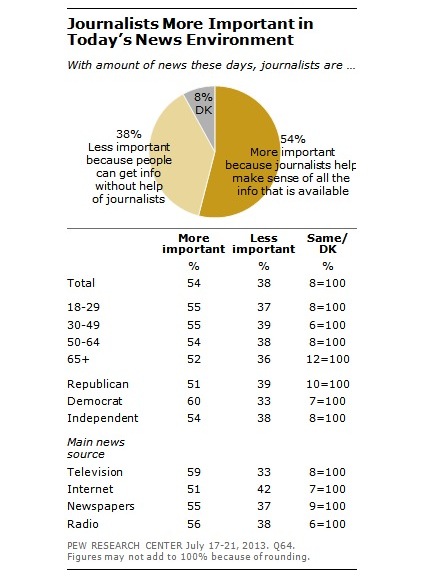 However, industry experts are not certain how this relates to the last study, which showed fewer Americans thought journalists made a positive contribution to society. However, industry experts are not certain how this relates to the last study, which showed fewer Americans thought journalists made a positive contribution to society.
But back to the study at hand.
This most recent study showed attitudes about journalists ability to sort through information remained on the positive side of the spectrum regardless of age and political affiliation.
Of those polled, the people between the ages of 18 and 49 had the highest percentage of those who thought journalists were "more important" (55%). The lowest came from those 65 and older (52%).
The split between the political parties also weighted the survey. 51% of Republicans felt journalists were more important while Democrats came in at 60%.
Another positive for journalists? There's an increasing appreciation for the media's role as political watchdog. 68% of those polled thought the press, "keep leaders from doing things that shouldn't be done." That number is up from 58% in 2011.
|
|
Best Newscast, Website, Breaking News. News Special, Public Affairs and Sports Programs. Reporting, Investigative, Series, Features, Sports, Weather, Traffic, Photography, Editing, MMJ, Writing.
2012-13 NorCal RTNDA Awards, pull down station, the password is "bnc" Entry deadline is Friday, September 8, 2014 for entries from July 1, 2012 to June 30, 1013. e-mail [email protected] or cal 650-341-9978 for more information or trouble logging in.
|
|
Contact Information:
National Academy of Television Arts & Sciences
San Francisco/Northern California Chapter
Darryl Compton, Executive Director
4317 Camden Avenue
San Mateo, CA 94403-5007
Phone: 650 341-7786 or 415 777-0212
Fax: 650 372-0279
[email protected]
The name "Emmy�" and the graphic image of the statuette, are registered trademarks of the National Academy of Television Arts & Sciences.
|
|
|
|
|